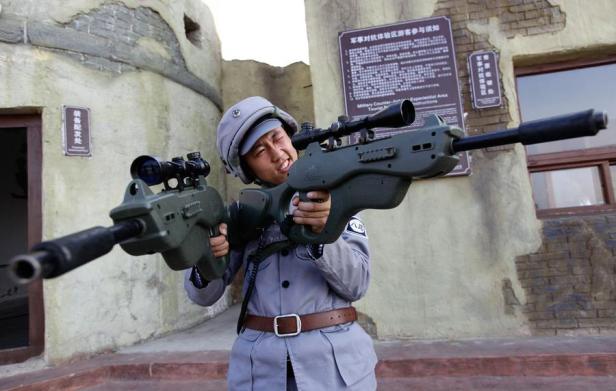
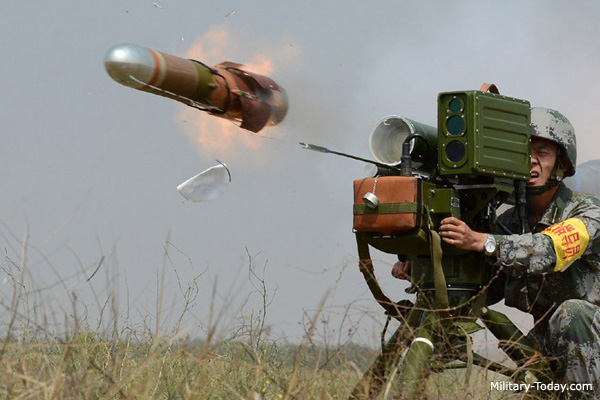
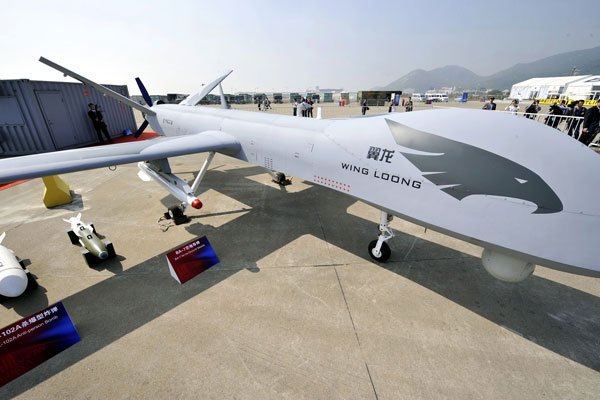
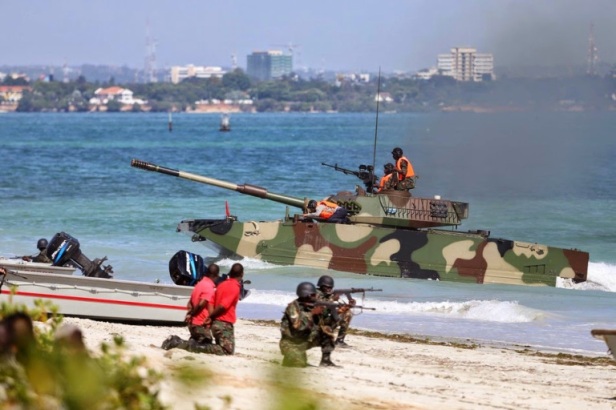
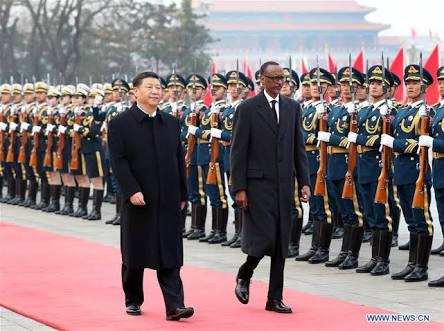
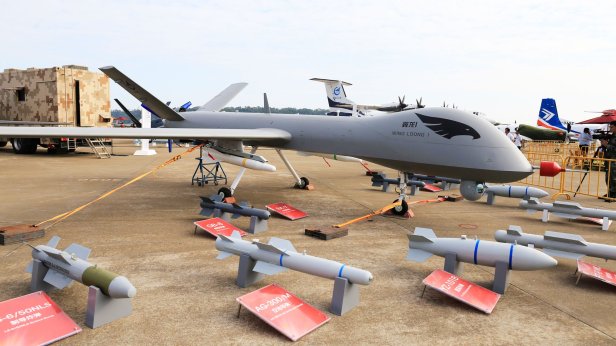
In late June, top military officials from Mali, Sierra Leone, South Sudan and dozens of other African countries gathered to discuss defense strategies and security threats.
The meeting didn’t take place in a major African city, but thousands of kilometers away, in Beijing, China.
The occasion was the inaugural China-Africa Defense and Security Forum, a high-profile showcase of expanding military partnerships hosted by China’s Ministry of National Defense.
The forum solidifies China’s standing as a key security partner for Africa and coincides with a raft of economic and political moves that have deepened its involvement across the continent.
Ideology, economics, politics
Paul Nantulya, a research associate at the Africa Center for Strategic Studies who focuses on China-Africa relations and security, told VOA that China’s military involvement in Africa blends ideology, economics and politics.
China’s presence on the continent dates back to the liberation struggles of the 1960s, when it supported anti-colonial and anti-apartheid movements in South Africa, Algeria, Sudan and other countries based on what Nantulya called “ideological concerns.”
When former Chinese leader Deng Xiaoping came to power in the late 1970s, unprecedented reforms set the stage for China’s ascent as an economic powerhouse.
China’s new global posture influenced its engagement in Africa, Nantulya said, bringing economic and political layers to relationships that had previously been one-dimensional.
“The military engagement that China has on the continent has become much more complex than merely just an extension of its ideological concerns,” Nantulya said.
“Increasingly, we’re also beginning to see military-to-military exchanges between African countries and China, and these exchanges cover a whole range of issues, from peacekeeping to disaster response, to military building, army building, professional military education,” he added. “So, it’s a much bigger portfolio.”
Clear goals
African military officials at the defense forum told CGTV, a Chinese state-run broadcaster, that they have well-defined expectations of their partnerships with China.
“What we require from China, which is made very clear, is for them to provide us with the partnership, with the support, with the expertise, with the technical capability, with the capacity-building, with infrastructure, for us to be able to do the job ourselves,” said Lt. Gen. Masanneh Nyuku Kinteh of the Gambia Armed Forces.
But if African nations see in China a strategic partner, China sees, at least in part, potential customers. That’s because China is a major player in the global weapons supply chain, Nantulya said, and it’s looking for markets.
Chinese manufacturers have used their growing presence in Africa, along with generous government subsidies, to produce military hardware that’s both cheaper and easier to maintain than their competitors.
Whereas Western countries focus on heavy hardware — jets, tanks, rockets — China’s niche has long been small arms, including pistols and AK-47 assault rifles, Nantulya said.
They sell these, along with ammunition, bullet-proof armor and unmanned aerial vehicles, not just to African militaries but also to police and intelligence forces.
One example of a close arms relationship is with Sudan, a country whose military industry China helped develop. Algeria, Angola, Mozambique, Tanzania and Zimbabwe also import many Chinese arms. And that portfolio is becoming more diverse, including tank deals and accompanying technical training with South Sudan and Uganda, Nantulya said.
Party-to-party
China’s military engagements span the continent, from traditional partners such as Angola, Libya and Tanzania, to more recent relationships with Kenya, Nigeria, Ethiopia and Djibouti.
In each case, China seeks to strengthen its military-to-military connections with party-to-party ties, Nantulya said. “China invites officials of these ruling parties in these different countries to Beijing. This is a program that is run by the [Central] Party School,” he added, referring to the institution that trains officials for the country’s Communist Party.
Through this year-round program, China promotes its ideologies and large-scale initiatives, combining political propaganda with defense strategy and tactics.
One example in which many saw Chinese political and security interests mesh was the abrupt fall from power last November of Robert Mugabe, who had led Zimbabwe for 37 years. Many analysts suspected that China played a role in what some considered a military coup.
A visit by Constantino Chiwenga, then the chief of the military, to Beijing days before Mugabe was put under house arrest stoked those rumors. But shortly after Zimbabwe’s military seized control, Geng Shuang, a Chinese Foreign Ministry spokesperson, told Reuters that visit was a normal military exchange.
Chiwenga now serves as Zimbabwe’s vice president.
‘Cult of defense’
China casts itself as a different kind of partner for African countries eager to see their sovereignty respected. Rather than make development aid contingent on political reforms or project overt military power, China pursues its security goals indirectly.
One venue that’s served as a springboard to a deepening military presence is the Belt and Road Initiative (BRI), China’s trillion-dollar global development program, which has been the backdrop for many of growing relationships in Africa.
The BRI projects, including railways, dams, ports and a sprawling new free-trade zone in Djibouti, have the potential to accelerate Africa’s industrialization. In many cases, they also entail an ongoing Chinese presence and an investment that needs protecting.
“This is a huge — a massive — footprint,” Nantulya said. “And so China is coordinating its military approach to be able to secure some of those interests.”
China has also become more involved in peacekeeping missions to expand its military footprint.
“They’ve been much more willing to deploy peacekeepers in places like Sudan, in Darfur, [and in] South Sudan. They’ve been much more willing to take those kinds of risks. But those kinds of risks also come with demands,” Nantulya said.
No-strings-attached engagement without political preconditions has, so far, been an effective strategy for China. But it has also restricted the moves China can make and how it presents itself to prospective partners.
“China has been captive to what one would call a ‘cult of defense,’” Nantulya said.
That would preclude making pre-emptive strikes or other overt shows of power. China considers its base in Djiobuti a “logistics facility.”
But China is part of an elite group of countries that has such overseas bases. And at least one stipulation accompanies all its deals: Countries must sever diplomatic ties with Taiwan a country that China considers its own territory.
Equal partner?
To build solidarity, China presents itself as a developing country on par with partners in South Asia, Latin America and Africa.
Maj. Gen. Ibrahima Dahirou Dembele from Mali highlighted shared interests at the Defense Forum, saying, “We are close to China both culturally and historically, and in facing challenges.”
But the size of China’s economy surpasses all of Africa combined, and a recent report by The New York Times on a port transfer in Sri Lanka shows that China can be an aggressive strategic partner.
In the past decade, China has embraced a more assertive stance around the world, Nantulya said. That’s evident in its intelligence, defense and security strategies, and embedded in its foreign policy.
But China’s “equal partner” narrative has endured.
During a Defense and Security Forum speech that aired on CGTV, Wei Fenghe, China’s national defense minister, said, “China and Africa’s countries are developing nations. It’s truly fair to say that we are for a community of shared future.”
It’s a sentiment that recalls China’s ideologically driven involvement on the continent in the 1960s and continues to resonate, despite ambitions that have become far bigger and more complex.
From 2013 to 2017, China’s arms exports to Africa surged 55 per cent from the previous five-year period of 2008 to 2012, according to Stockholm International Peace Research Institute.
While Africa’s overall arms imports decreased 22 per cent over the same period, China’s share of total African arms imports rose 8.6 per cent to 17 per cent.
Meanwhile, Russian arms exports to Africa fell by 32 per cent, accounting for 39 per cent of total imports to the region. The US accounted for 11 per cent of arms exports to Africa.
As defence relations between the parties strengthen, here is a look at the weapons China sells to Africa:
Battle Tanks/Armored Vehicles
China exported 24 battle tanks to Tanzania and 30 to Chad in 2013, according to the latest available data from the United Nation Register of Conventional Arms (UNROCA).
China exports a few home-designed model battle tanks overseas. Its main model, the VT4 battle tank, is a third-generation vehicle built by for overseas export by state-owned arms maker China North Industries Group, officially abbreviated as Norinco.
The VT4 has a 125 millimetre smoothbore cannon capable of firing guided missiles. A remote weapon station on the turret is armed with a 12.7mm heavy machine gun.
Last year, Norinco expanded its line of tanks for the overseas market by developing the GL-5 armoured vehicle. The GL-5 system includes four radar systems and fixed projectile launchers attached to a tank turret for 360-degree coverage.
Armoured combat vehicles also are one of China’s top weapons exports to African countries, with Ghana and Namibia importing 76 and 21, respectively, in 2009 and Kenya importing 32 in 2007. Rwanda, Burundi, Mozambique, Chad and Gabon also have bought armoured combat vehicles from China.
The ST1 8×8 wheeled tank destroyer is another of China’s armoured vehicles for export. It boasts one Nato standard 105mm rifled gun that fires a full range of ammunition.
Combat Aircraft/ Drone
Combat aircraft and drones also are among China’s major arms export items.
Nigeria, Tanzania, Zambia, Bolivia, Namibia, Zimbabwe and Ghana all have been buyers of China-built combat aircraft, drone combat aircraft or drones, according to the latest UNROCA data.
JF-17 Thunder is China’s major jet in its export market. The single-engined jet was developed jointly by the Pakistan Aeronautical Complex and the Chengdu Aircraft Corporation of China.
It can deploy air-to-air and air-to-surface missiles, powered either by a Guizhou WS-13 or Klimov RD-93 afterburning turbofan, with a top speed of Mach 1.6.
Meanwhile, China has banned the export of its J-20 stealth fighter to the global market.
It is unclear how many unmanned combat aerial vehicles China actually has exported overseas, but what is certain is it wants to export more drones to dominate the market.
As a result of US drone export policy requiring all drone exports to go through a strict government approval process, Saudi Arabia and Jordan, among others, have turned to China to build their drone fleets.
Missile systems
Morocco, Sudan and Yemen have imported missiles and missile launchers from China, according to UNROCA.
Chinese arms reportedly have been used during conflicts in Congo and Sudan. In July 2014, Norinco delivered 100 guided missile systems to South Sudan.
The Red Arrow 9 anti-tank missile system and GP6 155mm laser-homing artillery weapon systems are Norinco’s major exports.
The Red Arrow is an advanced, third-generation anti-tank missile system deployed by the People’s Liberation Army. It has a maximum range of 5.5km with an armour penetration of 1,200mm.
The GP6 laser-homing artillery weapon system is designed to engage tanks and be used in infantry fighting. It is capable of destroying targets within a range of six to 25 kilometres.
Congo, Ghana, Sudan, Cameroon, Tanzania, Niger and Rwanda have imported calibre artillery systems from China.
EXPANDING FOOTPRINT
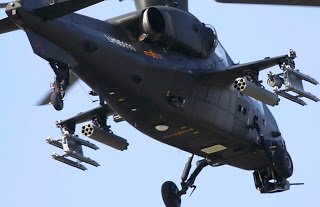
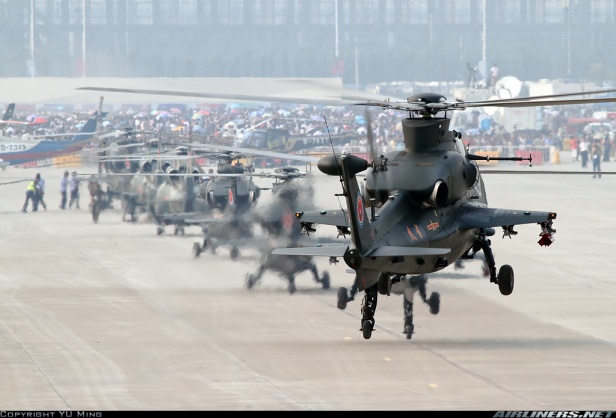
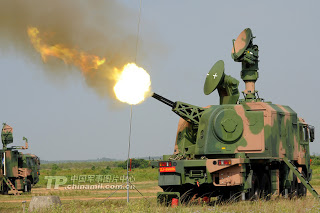
Over the past decade China’s role in peace and security has also grown rapidly through arms sales, military cooperation and peacekeeping deployments in Africa. Today, through FOCAC and support to the AU and other mechanisms, China is making a growing effort to take a systematic, pan-African approach to security on the continent.
This rising role in security undergirds Beijing’s economic statecraft and commercial interests in Africa, helps professionalise China’s military and protect its citizens there, and furthers its ambitions to be a major power with global influence. The rapid pace of change is taking Chinese security policy practitioners into new territory.
To avoid pitfalls for themselves and their African partners, they should deepen their expertise on local politics, societies and cultures, and the dynamics of conflict and its remedies; better monitor and modulate how China’s own engagement affects stability on the continent; and work more transparently with other governments, multilateral organisations and civil society to address problems.
Blue helmets and bases
In his address to the 2015 UN General Assembly, China’s President Xi Jinping offered $100-million in military assistance over five years to support the AU’s peace and security architecture through initiatives such as the African Standby Force and African Capacity for Immediate Response to Crises.
The 2015 FOCAC summit in South Africa reinforced this commitment. In Xi’s keynote address to this year’s forum and in its ensuing plan of action, China pledged to channel some of that funding into a China-Africa Peace and Security Fund, military assistance and 50 programs in law and order, peacekeeping, anti-piracy and counter-terrorism.
These FOCAC initiatives will build on an increasingly pervasive Chinese presence in Africa’s security sector, of which the most visible example is its growing participation in UN peacekeeping operations. Based on the UN’s formula for assessed funding, which considers China’s relative wealth and permanent member status on the Security Council, Beijing is now the second-largest contributor to the peacekeeping budget.
Chinese personnel have served on missions in Africa for decades, but until 2013 they were small contingents in unarmed roles such as medical and engineering support. China now provides more personnel than any other permanent member of the Security Council – they numbered 2 430 as of September.
This total is fewer than the leading troop contributors — Ethiopia, Rwanda, Bangladesh, India, Nepal and Pakistan each provide upward of 5 000 — but still large. Chinese peacekeepers now serve in infantry, policing and other roles in Africa.
With the end of China’s fourteen-year deployment with the UN Mission in Liberia in March, most are in the Democratic Republic of Congo, Mali, Sudan and South Sudan, where they have come under fire and taken casualties. As International Crisis Group described in its 2017 report, China’s Foreign Policy Experiment in South Sudan, the civil war in South Sudan also obliged China to nuance its avowed doctrine of non-interference to allow for more active roles in mediation and UN mandates to protect civilians — with the blessing of the AU and neighbouring countries.
Informed by those experiences, Beijing in 2015 set up a unique UN Peace and Development Trust Fund that the UN Secretariat manages. In 2016 and 2017, it allocated over $11-million for UN projects that include building African capacity to train police and soldiers for peacekeeping roles, regional operational analysis for peacekeeping missions and support for the AU’s initiative to “Silence the Guns” and end conflict in Africa.
Last year, the People’s Liberation Army (PLA) registered an 8 000-member standby force with the UN. While remaining at home in China, these troops have completed peacekeeping training and are available for operations.
The UN says 800 of them will join its new Vanguard Brigade, a rapid response unit. Beijing also has committed to provide police and helicopter squads and demining assistance, and to train 2 000 foreign peacekeepers. Last fall, Chinese production companies even worked with the PLA’s Political Department to launch a new television series called “Peacekeeping Infantry Battalion”, to dramatise the lives of Chinese blue helmets in Africa. These initiatives reflect a welcome interest in reforming and improving UN peacekeeping.
A more controversial sign of China’s military footprint is the 36-hectare Djibouti facility that the PLA established in 2017 with a ten-year lease at $20-million annually. The PLA describes it as a support base for naval anti-piracy operations in the Gulf of Aden, peacekeeping in South Sudan and humanitarian and other cooperation in the Horn of Africa, but has also used it to conduct live-fire military exercises.
In line with China’s 2015 defence white paper and counter-terrorism law, the Djibouti base enables the PLA to project force and protect Chinese citizens, supply chains and other interests in Africa and along its “Maritime Silk Road” across the Indian Ocean.
With those objectives in mind, in May 2018 China began constructing additional pier facilities at Djibouti’s Doraleh Multi-Purpose Port, which it has also helped finance. Many of the security pledges under FOCAC will likely draw upon Djibouti as an operational launching pad for joint exercises and training. As its regional role expands, the PLA would do well to communicate and cooperate more transparently with others jostling for influence around the Red Sea. The US, France and Japan have long had bases in Djibouti; Israel and the United Arab Emirates have bases in the Horn; Saudi Arabia also plans one; and Qatar and Turkey have both shown interest in developing Red Sea ports. For its part, India suspects, not unreasonably, that other Chinese bases could pop up along the Indian Ocean.
Defence and security relations
Less noticeable to outsiders but broader in impact is China’s direct defence and security cooperation with African counterparts. This takes place through a growing number of joint exercises, naval patrols and exchanges. In the first half of 2018 alone, the PLA Navy’s 27th and 28th anti-piracy escort task forces reportedly visited ports in Cameroon, Gabon, Ghana and Nigeria, while PLA units conducted drills in the same countries, and its medical teams did work in Ethiopia, Sierra Leone, Sudan and Zambia. Mere months after Burkina Faso’s May decision to switch diplomatic recognition from Taipei to Beijing, the PLA is already working to develop military ties that will likely emphasise counter-terrorism cooperation.
The first China-Africa Defence and Security Forum, held from June 26 to July 10 this year, marked a new, more formal and comprehensive level of dialogue. It brought senior military officers and officials from 49 African states and the AU to Beijing for discussions on regional security and military cooperation, and visits to PLA facilities for demonstrations of military equipment.
Like FOCAC, it leveraged Beijing’s convening capacity to build personal connections, market Chinese hardware and position China as a supportive partner.
China clearly intends to continue increasing such engagement, including through military training. Its Africa policy paper of 2015 proposes inviting thousands of African military officers for workshops. On August 30, the ministry of defence confirmed that it plans further cooperation with African countries on personnel training, logistics, peacekeeping, health care and relief operations. As these initiatives move forward, China’s Central Military Commission has expanded the remit and capacity of its Office for International Military Cooperation to manage them.
The 2018 FOCAC plan of action goes even further, calling for an ongoing China-Africa Peace and Security Forum and China-Africa Law Enforcement and Security Forum, and commits both sides to more intelligence sharing. It also pledges to support programs in consular services, immigration, justice and law enforcement, including running an annual anti-corruption course that aims to train 100 African officials by 2021.
For police, there will be more exchanges, donations of equipment and training, and formalised engagement with the African Police Cooperation Organisation. Chinese – and wider Asian – demand for African wildlife and its products, particularly ivory, rhinoceros horn and pangolin, drives poaching, smuggling and trafficking, the profits from which often fuel violence and organised crime across the continent. China’s ivory import ban, which took effect on 1 January, was a welcome and long-overdue step, but it requires enforcement. FOCAC has helpfully added a three-year plan under Interpol to combat such activities.
As the FOCAC commitments note, China is complementing these cooperation mechanisms with more military assistance for the AU. In the first major disbursement from China’s $100-million commitment, it concluded an agreement in February to provide $25-million in military equipment for the AU’s logistics base in Cameroon.
Beijing has also made small contributions to the AU’s mission in Somalia and to sub-regional organisations. Still, most military assistance flows directly to countries such as Angola, the Democratic Republic of Congo and Zimbabwe, where China also has significant commercial interests. A recent example is the $30-million training centre that China completed in February for Tanzania’s military at Mapinga.
The political and defence relationships fostered by these programs grease the wheels for weapons sales. Data compiled by the Stockholm International Peace Research Institute (SIPRI) shows that China has become the top supplier of arms to sub-Saharan Africa, accounting for 27% of the region’s imports over the four year period from 2013-2017, an increase of 55% over 2008-2012.
Some 22 countries in the region have procured major arms from Chinese suppliers in recent years, key among them Ghana, Kenya, Nigeria, Tanzania and Zambia. In June, China’s State Administration for Science, Technology and Industry for National Defence reported that Beijing now has defence industry, science and technology ties with 45 African countries. Given China’s particularly influential role in sales of small arms, light weapons and ammunition, it should do more to improve transparency, monitoring of end users, and cooperation with UN investigators to prevent those weapons from ending up in the wrong hands.
Drivers of Chinese engagement
There are multiple reasons for China’s growing security role and perceived need for an overarching strategy. One is simply supply and demand: the swelling capacity of its military and industrial base, and African governments’ interest in its relatively affordable arms, flexible financing terms and comparatively unrestricted approach, including non-interference in matters such as governance and human rights.
China’s own expanding economic interests are a further driver. Africa’s largest trading partner since 2009, China increasingly counts on the continent for natural resources and markets to maintain its own growth and social stability. Its belt and road initiative, which has metamorphosed into a global set of bilateral agreements to foster Chinese trade, investment and financing, first expanded into East Africa with infrastructure projects in Kenya and Ethiopia.
The initiative is now open to the whole continent, and the Chinese are prospecting for opportunities in West Africa. As the new FOCAC plan indicates, that effort is stimulating Chinese concerns about piracy in the Gulf of Guinea and terrorism in the Sahel, as well as discussion of building local capacity to counter them. Beijing intends that the security-related programs in the new action plan support the Belt and Road.
Geopolitical and propaganda priorities are a further impetus for Chinese engagement.
Moreover, roughly a million Chinese are estimated to live and work in Africa, and China’s leaders have a domestic political imperative to ensure their safety. Beijing has already contended with evacuations from Libya, South Sudan and Yemen, and incidents of violence and property damage elsewhere.
The 2017 Chinese blockbuster action movie Wolf Warrior II brought home a Rambo-esque fantasy version of these concerns. Set in a nameless African country that descends into chaos, it closes with the hubristic message that China’s government will protect its citizens wherever they go.
Geopolitical and propaganda priorities are a further impetus. President Xi’s lofty foreign policy agenda requires portraying China as a major power that provides public goods and seeks to rebalance global governance and give greater voice to developing countries. FOCAC supports that narrative by showcasing China as a continental-scale partner that tends to support African positions in forums such as the UN Security Council — at least when it suits Chinese interests. Xi is also determined to modernise the PLA, and giving it expeditionary experience in diverse African environments advances that ambition.
Chinese aid and investment and African stability
China’s multilateral pledges to support African peace and security initiatives are welcome. But how much its overall footprint will contribute to improving stability is less certain. African conflicts’ multiple drivers include not only state weakness but also political exclusion, repressive leadership and politicised institutions. Chinese economic and political influence could exacerbate those dynamics, for example by deepening debt, enriching elites, widening disparities, fostering corruption and stifling dissent — whether or not that is the intent.
Security sector cooperation risks transferring methods and technologies from Beijing’s authoritarian playbook, in which the law and its enforcers are instruments of party and state power rather than constraints on it. That might help African states impose order and control, but at the cost of progress on accountable governance and human rights. Optimally, China and its African partners would match their laudable 2018 FOCAC pledges with efforts to address these concerns. Chinese and other scholars working on Africa have already floated a number of options for doing so.
First, in line with the FOCAC pledge to increase training for non-military personnel and deepen academic exchanges, China should continue improving its knowledge, talent and analytical capacity on African peace and security issues, for example through extensive field research by scholars and more participation by civilian personnel in peacekeeping.
For policy practitioners, this effort should include engagement with African and international experts and civil society representatives on topics such as conflict resolution, early warning, peace-building and response to complex emergencies. While such learning is likely to move the needle of Beijing’s policy only gradually, it could, over time, lead to Chinese engagement in Africa that supports the conflict prevention and resolution efforts of the UN, AU and regional bodies.
Second, the Chinese state could use its unique capacity to direct assistance, investments and loans to ensure they spread their benefits more widely, promote employment and corporate social responsibility and do not aggravate instability. The new China International Development Cooperation Agency established this spring could channel more assistance to challenges with security implications such as youth employment, climate change, public health and food security.
China’s policy banks could effectively fulfil the 2015 FOCAC pledge to expand special loans for small and medium-sized enterprises in Africa from $1-billion to $6-billion. China’s law enforcement agencies could crack down on Chinese citizens involved in criminal activities such as illegal mining and trafficking.
Finally, China could engage more transparently and cooperatively with the full spectrum of actors involved in peace and security on the continent. As it widens channels to African governments, the UN and AU, it should do likewise with other governments, civil society and the media.
When it comes to the US, Japan and non-governmental organisations, given current levels of mutual suspicion, such engagement may need to start with informal communication and incremental collaboration to build trust and familiarity. That might include sharing good practices on technocratic topics such as aid effectiveness, project implementation, and monitoring and evaluation.
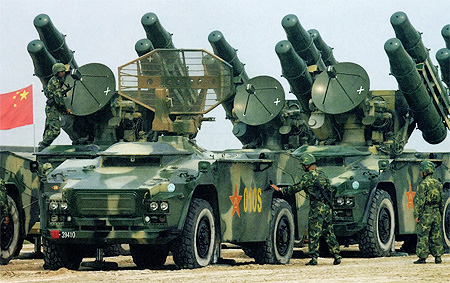
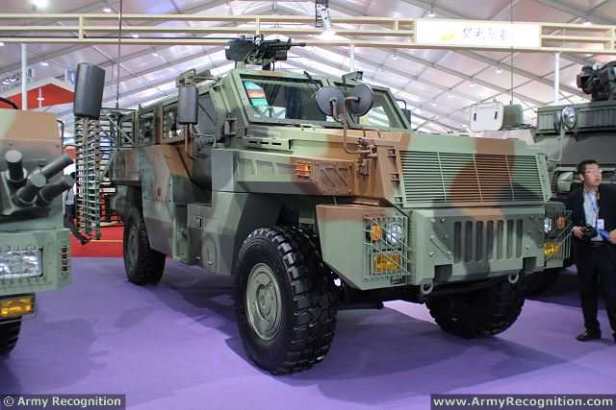
If China’s stepped-up military cooperation only reinforces incumbents and strengthens African security forces, as some leaders on the continent themselves desire, that alone is unlikely to make Africa more peaceful. Of course, China is hardly alone in making that mistake — some Western countries have much longer histories of doing so. But as Beijing’s influence grows, whether it uses its clout to nudge African leaders toward accommodation with rivals and addressing the grievances underpinning instability, or simply enables their entrenchment in office, will matter ever more.
Sources: VOA, Mail & Guardian, South China Morning Post Publishers Ltd
